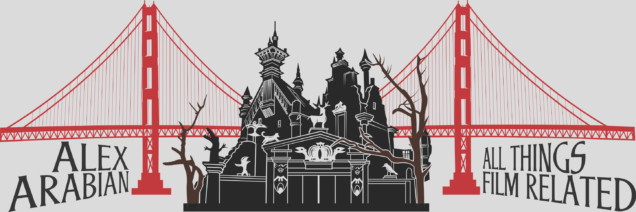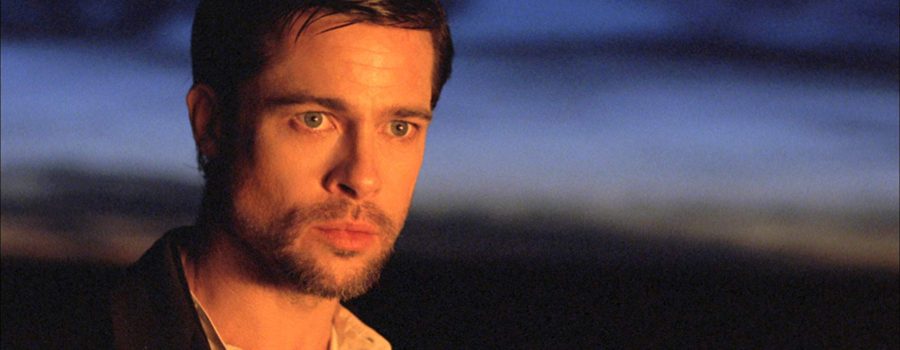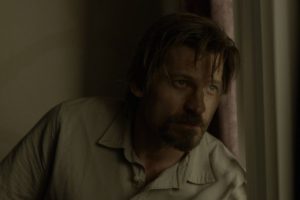[Published at Living Life Fearless] Andrew Dominik’s sophomoric feature, The Assassination of Jesse James by the Coward Robert Ford, based on Ron Hansen‘s eponymous novel, is one of the most underrated films in the annals of cinema. It completely redefined the American Western, retelling the story of the legendary outlaw’s downfall through a haunting, mesmeric lens. Rather than a celebration of traditional masculinity by way of the classic western, the film is a perceptive deconstruction of flawed masculinity and a dual character study about two complex, troubled individuals.
The era of the Wild West, or the American Frontier, was one defined by lawlessness, manifest destiny, societal restoration after the Civil War, the shifting ideological constructs of the American Dream, and great conflict between Native Americans and white Americans. Although mythicized in American film since the medium’s inception, the Wild West only lasted roughly 30 years in reality, between 1865 and 1895. During this period of lawlessness and manifest destiny, the West saw a distinct rise in crime, paving way for the American outlaw.
The outlaw was thought of by common citizens as the American antihero beginning as early as the American Frontier, documented in sensationalized literature, and often romanticized in modern American folklore.
In a sense, the outlaw in the Wild West was one of the first iterations of celebrity in America. Robert Ford’s troubling fixation with the outlaw Jesse James was one of the first instances of celebrity obsession, a long pattern in American history that would lead to our celebrity-obsessed culture today. The outlaw was thought of by common citizens as the American antihero beginning as early as the American Frontier, documented in sensationalized literature, and often romanticized in modern American folklore. The outlaw was by no means a moral paragon, but they represented the last iota of true freedom, a word whose meaning has been manipulated to fit the shifting American agenda over the past, roughly, 250 years. Though often violent and ill-mannered, the outlaw took what was theirs, often seen as Robin Hood-esque, underdog figures in the eyes of the public.
In The Assassination of Jesse James by the Coward Robert Ford, Robert Ford (Casey Affleck) grows up on stories of The Jesse James Gang, incessantly idolizing James (Brad Pitt), ultimately leading to his figurative and literal demise. Dominik’s western uses the idea of the outlaw, specifically through analyzing Jesse James and Robert Ford’s relationship, as an allegory for modern American celebrity obsession and the negative consequences of a culture that worships popular people as godlike figures.

The Myth of the American Cowboy
Contrary to popular belief, the cowboy, as he is referred to in popular culture, wasn’t a legendary “hero” in the zeitgeist of American Frontier popular culture. The cowboy was briefly published in dime novels to promote manifest destiny through capitalist propaganda. However, the subject matter’s publication circulation was short-lived.
David Hamilton Murdoch wrote in The American West: The Invention of a Myth, “The West of the cattle ranges held the freedom and the values which the nation need and the cowboy was its epic hero, the last free individual in a society which had destroyed individualism.” Murdoch describes the image of the cowboy as an American myth.
…Dominik focuses on immersing himself, and the audience, in the historically accurate Wild West, focusing on the mythos of the time, bringing to life historical figures and events…
In actuality, the “cattleman,” as he was called throughout the short history of the Wild West, was penurious, illiterate, and extremely volatile toward Native Americans, as opposed to the implanted image of self-reliance, individualism, and the rugged “gentleman” in the collective conscience of society by mainstream Hollywood. The “cowboy hat” made popular by Clint Eastwood wasn’t even a staple of the cattleman’s wardrobe, as it was too expensive on his financial budget.
Dominik’s western shifts the focus away from the cowboy and toward the outlaw. Some historians note the detective dime novel for taking the place of the fleeting cowboy literary depiction. However, it was the outlaw that solidified popularity and endured on shelves as well as being the most historically accurate among dime novels and other entertainment mediums.
Rather than depict a revisionist retelling of a historical event or fictionalized version of a period in history, Dominik focuses on immersing himself, and the audience, in the historically accurate Wild West, focusing on the mythos of the time, bringing to life historical figures and events rather than a formulaic commercialized recreation of Western ideology.
The Celebrity of Jesse James
Oscar Wilde traveled to the Wild West during a pivotal time, during which the age of the outlaw was ending. The last bit of the West, where people risked their lives to cross the country, over harsh terrain and climates, finally over the Rockies, to where “civilization” surrendered to “barbarism,” was becoming industrialized. According to Literary Traveler, after Wilde visited James’ hometown and learned of his assassination by Ford, he wrote in a letter home, “Americans are certainly great hero-worshipers, and always take [their] heroes from the criminal classes.”
“Westerners did not repudiate the myth, they exploited it,” writes Murdoch. “Those clustered around the memory of Jesse James did so from the moment of his death. His mother opened the family farmstead as a tourist attraction and sold pebbles from his grave at five cents each. Frank James took over this modest enterprise after her death, charged twenty-five cents admission and sold picture postcards featuring himself.”

“The man who offered 30,000 dollars for the body of President Garfield’s assassin sent a telegram to City Marshal Enos Craig offering 50,000 for the body of Jesse Woodson James so that he could go around the country with it or at least sell it to P.T. Barnum for his Greatest Show on Earth. Another photograph was taken of the renowned American bandit nestled in his bed of ice. And it was this shot that was most available in sundries and apothecaries to be viewed in a stereoscope alongside the sphinx the Taj Mahal, and the catacombs of Rome.” Explains the narrator (Hugh Ross). James was immortalized.
Like many troubled celebrities, James’ star power outshined his bad deeds. The pardoning of Ford’s murderer by Governor James B. Orman in the ending of the film shows how powerful “celebrities” can become, even proving immune to certain laws, in this case posthumously. The murderer was seen as a hero for avenging James’ assassination – this foreshadows a long tradition of celebrities getting preferential treatment in American law – obvious examples are plentiful. The way the media covered the life and death of James speaks volumes about what America would become and further highlights a problematic glorification of and synonymity between violence and fame in American history. All one needs to do is look back at history, and the state of America today, with a corrupt businessman and reality TV host as the president, doesn’t seem as shocking.
Robert Ford & The Birth of Toxic Fandom
As aforementioned, Robert Ford’s obsession with Jesse James parallel’s America’s fascination with the modern-day celebrity. Robert Ford is the ultimate “fanboy” of Jesse James. An awkward child, he grew up consuming himself with old newspaper cutouts, dime novels, books, postcards, and anything else he could find to compare himself to the larger-than-life-outlaw.

Robert Ford himself was after the same kind of fame in assassinating James. He wanted to be immortalized. His obsession went so far as to imply that he may have had romantic feelings for James, or even wanted to be him in some way. In Ford’s blind pursuance of his own fame, caught up with being the one who takes down the famous outlaw Jesse James, he makes himself infamous instead, while ascending James to legend status. “There would be no eulogies for Bob, no photographs of his body would be sold in sundries stores, no people would crowd the streets in the rain to see his funeral cortege, no biographies would be written about him, no children named after him. No one would ever pay 25 cents to stand in the rooms he grew up in.” This quote from the narrator perfectly encapsulates Robert’s downfall. His self-destruction in the twilight-era of his notoriety shows fame’s viscous cycle. Robert and Charley’s (Sam Rockwell) stage play in the end, reenacting the assassination, shows society’s demand for the commodification of such an event.
If the appeal of the Western is tapping into our collective fears of losing freedom, individuality, democracy, and the American Dream, that which we hold most precious, what is the appeal outside of the United States? According to Murdoch, “The Marxists would claim that the universal appeal of the Western is the result of the alienation we all feel as the result of the dehumanizing effects of capitalist exploitation. The conditions and patterns of work and the relationships imposed by industrial capitalism are, it is argued, unnatural and destructive of the human spirit and we instinctively long for a simpler, happier world.” Interestingly, the two sociopolitical ideologies are attracted to the Western for virtually completely opposing reasons. One thing about the Western can be agreed upon: it is universally loved.
Robert’s downfall is tragic, undoubtedly, especially in the narratively and visually poetic way it is presented. Every word of Dominik’s adaption of Hansen’s novel echoes long after it is eloquently spoken in The Assassination of Jesse James by the Coward Robert Ford. Each frame, hauntingly lit and filtered through Roger Deakins’ expert lens, sticks with the viewer long after it leaves the screen. However, the tragedy of Robert’s story doesn’t make it any less prescient or disturbing. It’s a modern-day iteration of the Icarus myth for a culture fixated on fame, in the guise of a one of cinema’s most beloved genres: the American Western.
Robert and Charley’s stage play in the end, reenacting the assassination, shows society’s demand for the commodification of such an event.








2 Comments
Leave your reply.